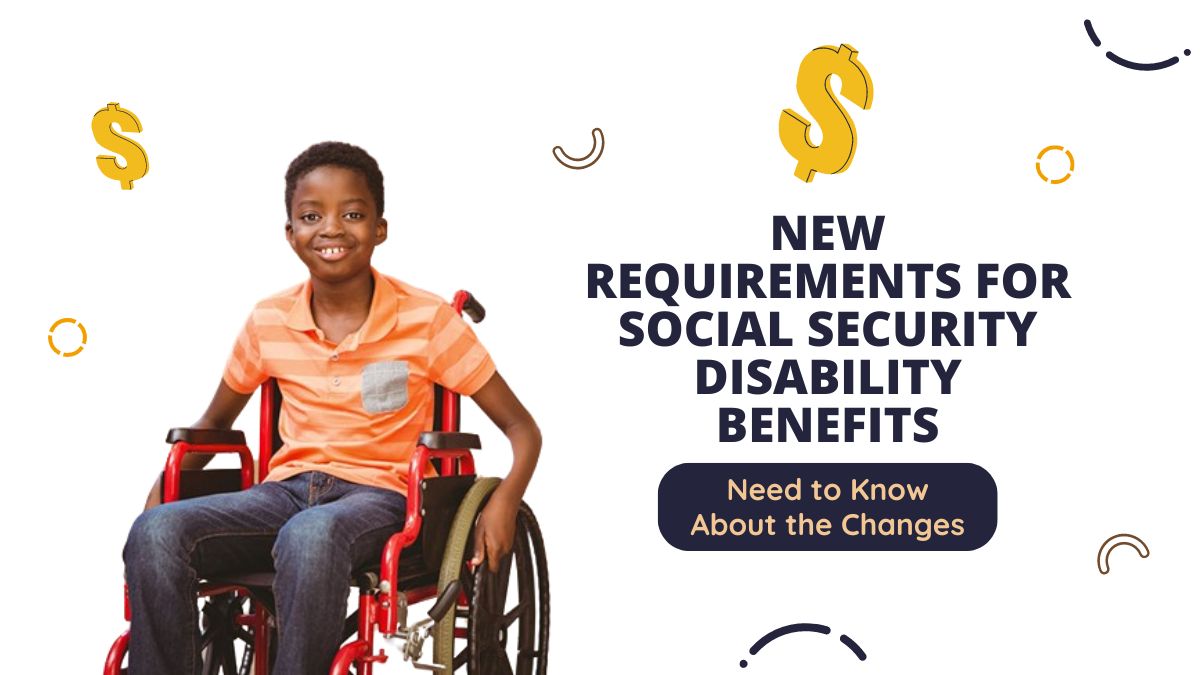Staying informed about changes to Social Security disability benefits is crucial for anyone who qualifies. The Social Security Administration (SSA) recently announced significant updates to the eligibility requirements, adding new conditions that fall under the Compassionate Allowances (CAL) program.
This program is designed to expedite the processing of disability claims for individuals with severe medical conditions, ensuring they receive benefits faster. Let’s cut into these changes, the new conditions added, and how this might affect those applying for disability benefits.
Updates
The SSA has made significant strides in speeding up the disability claims process by expanding its Compassionate Allowances program. This initiative, which now includes over 280 conditions, aims to quickly identify and approve claims for individuals with severe disabilities based solely on medical evidence. As part of the recent update, nine new conditions have been added to the CAL list, and two existing conditions have been revised. These conditions include:
- Neonatal Marfan Syndrome
- PACS1 Syndrome
- Renal Medullary Carcinoma
- Bainbridge-Ropers Syndrome
- Costello Syndrome
- Adult Heart Transplant Wait List – Status Levels 1-4
- Child Heart Transplant Wait List – Status Levels 1A/1B (revised)
- Histiocytic Malignancies
- Histiocytosis Syndromes (revised)
These additions reflect SSA’s commitment to ensuring that those with the most serious conditions receive benefits as quickly as possible.
Process
The CAL program is crucial for identifying cases where the applicant’s medical condition meets the statutory criteria for disability benefits under Social Security. Given the serious nature of the conditions covered, these claims are often approved based on medical documentation alone, bypassing the lengthy traditional approval process. To date, the CAL program has helped over one million people with severe disabilities receive benefits more rapidly.
To further enhance the efficiency and accuracy of the claims process, SSA is leveraging advanced technology. This includes health IT systems that allow for the swift transfer and review of electronic medical records. By utilizing these tools, SSA can quickly identify CAL conditions and make decisions faster, reducing the wait time for applicants.
Technology
SSA’s use of technology is a game-changer in the disability benefits application process. According to SSA Commissioner Martin O’Malley, the goal is to reduce the time it takes for applicants to receive a decision on their disability claim. The integration of technology ensures that claims are reviewed accurately and efficiently, streamlining the entire process. As a result, Social Security can now handle medical information more quickly, enabling them to make prompt decisions about eligibility.
As of July, around 7.2 million Americans were receiving disability benefits, with an average monthly payment of $1,500. The total monthly payout for these benefits reached approximately $11 million. The SSA’s ongoing efforts to enhance the CAL program and implement technology-driven processes demonstrate their dedication to helping those in need as quickly and accurately as possible.
Taxes
One of the common questions surrounding disability benefits is whether recipients need to pay taxes on their benefits. The answer depends on the type of benefit received and the recipient’s income. For those receiving Supplemental Security Income (SSI), the benefits are not taxable as they are funded by the federal government. However, Social Security Disability Insurance (SSDI) benefits can be taxable if the recipient’s income exceeds certain thresholds.
If a beneficiary files a separate federal tax return and their combined income exceeds $25,000, up to 85% of their SSDI benefits may be subject to taxes. For those filing jointly, this threshold increases to $32,000. It’s important to note that if a married couple files separately, they may face additional tax implications. Knowing these tax responsibilities is crucial for beneficiaries to avoid any unexpected tax bills.
The SSA’s recent updates to the Compassionate Allowances program highlight the agency’s commitment to ensuring that individuals with severe medical conditions receive the support they need without unnecessary delays. By expanding the list of qualifying conditions and leveraging technology, SSA is making the disability benefits process more efficient and accessible for those in need.
FAQs
What is the Compassionate Allowances program?
It’s an SSA initiative to expedite disability claims for severe conditions.
Which new conditions were added to the CAL program?
Conditions include Neonatal Marfan Syndrome and Renal Medullary Carcinoma.
Are SSI benefits taxable?
No, SSI benefits are not taxable.
How does SSA use technology in disability claims?
SSA uses technology to quickly review and process electronic medical records.
What is the average monthly SSDI benefit?
The average monthly SSDI benefit is about $1,500.
















